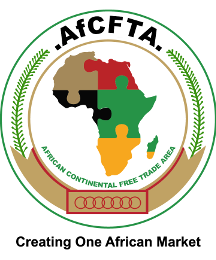
Editorial - What has happened to AfCFTA?
It is an incontestable fact that African countries trade very little among themselves. Intra-African exports made up only 19 per cent of total trade in 2018, compared to 59 per cent and 69 per cent for intra-Asia and intra-Europe trade, respectively.
The only panacea to this conundrum is trade integration. Trade integration allows countries to specialise in the production of goods and services for which they have comparative advantage and to exploit economies of scale, thereby improving productivity and growth.
Trade integration can also foster structural transformation by spreading knowledge and technology and spurring the development of new products.
Thankfully, the establishment of subregional economic communities over the last two decades has accelerated intra-regional trade across the continent in that period, with intra-regional imports almost tripling from a five per cent share to 14 per cent of all trade ($100 billion) within that period.
The acceleration of trade within these communities has also created major regional trading hubs including South Africa, Senegal, Kenya and Côte d’Ivoire, thereby making a strong case for trade integration.
It is against this backdrop that the creation of the African Continental Free Trade Area (AfCFTA), which is a single market (Duty-free, Quota-free) covering the entire continent with a total population of 1.2 billion and a combined GDP of almost USD 3 trillion, is indeed historic and a blessing. So far, 54 countries out of 55 (with the exception of Eritrea) have signed the AfCFTA and 27 countries have ratified the agreement.
The AfCFTA is the single most significant development in Africa since the establishment of the Organisation of African Unity (OAU) in 1963. It is considered the flagship project under the AU Agenda 2063. It is the world’s largest Free Trade Area, second only to the World Trade Organisation (WTO) in terms of the number of member states.
The aim of AfCFTA is to eliminate tariffs on most goods, liberalise trade of key services, address non-tariff obstacles to intra-regional trade, and eventually create a continental single market with free movement of labour and capital
Ninety per cent of goods will be liberalised over the course of five to eight years; seven per cent of goods will be classed as sensitive and liberalised over 10-13 years; and three per cent of goods will be exempt from free trade entirely. It is possible that the inclusion of exempt goods will limit intra-African trade gains.
We are extremely happy that Ghana won the right to host the secretariat which will impact the economy and our national development agenda positively.
AfCFTA will open up new opportunities under preferential terms for Ghanaian producers, especially SMEs, apart from enhancing the government’s current industrialisation development agenda.
Trading under the agreement should have begun on July 1, 2020, however, because of the raging pandemic very little has been said of the implementation timetable.
As a paper, we hope that African governments will not allow COVID-19 pandemic to kill such a noble dream.

